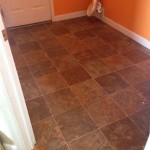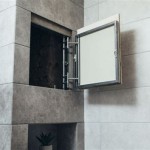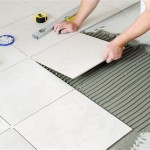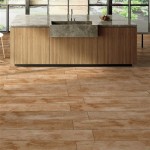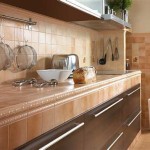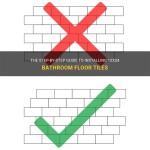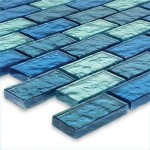A Guide To The Largest Cantilever Umbrellas
Cantilever umbrellas, also known as offset umbrellas, are a popular choice for providing shade in outdoor spaces. Their design, which features a supporting pole offset to the side, allows for unobstructed coverage over seating areas, dining tables, or pools. When considering a cantilever umbrella, the size is a crucial factor, particularly when seeking to maximize shaded area. This guide delves into the aspects of selecting the largest cantilever umbrellas, exploring their benefits, considerations, and common size ranges.
The primary advantage of a large cantilever umbrella is its expansive shade coverage. This is especially valuable in larger outdoor areas where a traditional center-pole umbrella would not suffice. The offset design further enhances this benefit by eliminating the pole as an obstacle, allowing for more efficient use of the shaded space. This is particularly useful for outdoor dining arrangements where a central pole could interfere with seating or table placement.
Large cantilever umbrellas provide superior protection from the sun's harmful UV rays, creating a more comfortable and safer outdoor environment. This is especially important for individuals with sensitive skin or those who spend extended periods outdoors. Furthermore, the shade offered can also help to keep outdoor furniture cooler, preventing fading and extending its lifespan. The large canopy also offers protection from light rain, allowing for continued outdoor enjoyment even during brief showers.
When selecting a large cantilever umbrella, it is essential to consider several key factors. These include the size of the area requiring shade, the materials used in the umbrella's construction, the stability of the base, and the ease of operation and maintenance. Understanding these aspects will ensure that the chosen umbrella meets the specific needs of the user and provides long-lasting performance.
Determining the Appropriate Size
The first step in selecting a large cantilever umbrella is to accurately assess the area requiring shade. Measure the length and width of the space to be covered, taking into account the position of the sun at different times of the day. Consider the placement of furniture and other outdoor elements to ensure adequate shade coverage for all intended uses. It is often recommended to err on the side of caution and choose a slightly larger umbrella than initially estimated, as the sun's angle can shift throughout the day.
Cantilever umbrellas are typically measured by the diameter or diagonal length of the canopy. Common sizes for larger cantilever umbrellas range from 10 feet to 13 feet or more. Square-shaped canopies offer a different kind of coverage than round canopies, and the shape should be considered in relation to the area being shaded. For instance, a square canopy may be more suitable for covering a rectangular dining table, while a round canopy might be better for shading a circular seating area.
One should also consider the height of the umbrella. A higher canopy will provide better air circulation and a wider range of shade coverage as the sun moves across the sky. However, a higher umbrella may be more susceptible to wind, so it is important to ensure that the base is sufficiently heavy and stable to prevent tipping.
Material and Construction Quality
The materials used in the construction of a large cantilever umbrella significantly impact its durability and longevity. Look for umbrellas with frames made from rust-resistant materials such as aluminum or steel with a powder-coated finish. These materials will withstand exposure to the elements and prevent corrosion over time. The canopy fabric should be made from a durable, fade-resistant material such as solution-dyed acrylic or polyester.
Solution-dyed acrylic fabrics, such as Sunbrella, are known for their superior colorfastness and resistance to fading, mildew, and stains. Polyester fabrics are a more affordable option, but they may not be as durable or fade-resistant as acrylic fabrics. The weight of the fabric is also an important consideration; heavier fabrics will generally be more durable and provide better UV protection. Heavier fabrics also tend to be more resistant to stretching or tearing from wind.
The construction of the umbrella frame is also crucial. Look for umbrellas with reinforced ribs and sturdy connectors. The ribs support the canopy and distribute the weight evenly, preventing sagging or damage in windy conditions. The connectors should be made from high-quality materials and securely fastened to the frame. The mechanism for opening and closing the umbrella should also be robust and easy to operate. Features such as crank lifts or pulley systems can make it easier to raise and lower the canopy, especially on larger umbrellas.
Base Stability and Safety Considerations
The base of a cantilever umbrella is critical for its stability, especially in windy conditions. A large cantilever umbrella requires a heavy and stable base to prevent it from tipping over. The weight of the base should be proportional to the size of the umbrella canopy. A general guideline is to use a base that weighs at least 100 pounds for umbrellas up to 10 feet in diameter, and even heavier bases for larger umbrellas. Some manufacturers provide specific weight recommendations for their umbrellas.
Bases are typically made from concrete, steel, or plastic that can be filled with sand or water. Concrete bases are the heaviest and most stable option, but they can be difficult to move. Steel bases are lighter than concrete but still provide good stability. Plastic bases are the most affordable option, but they require filling with sand or water to provide sufficient weight. The base should also be designed to securely attach to the umbrella pole. Look for bases with adjustable straps or locking mechanisms to prevent the pole from shifting or wobbling.
In addition to base stability, it is important to consider safety features such as wind vents. Wind vents are openings in the canopy that allow wind to pass through, reducing the risk of the umbrella being lifted or damaged by strong gusts. Some umbrellas also have tilt mechanisms that allow you to adjust the angle of the canopy to block the sun at different times of the day. When the umbrella is not in use, it should be closed and secured to prevent it from being blown over by the wind. Consider purchasing a protective cover to protect the umbrella from the elements when it is not in use, further extending its lifespan.
Regular maintenance is essential for keeping a large cantilever umbrella in good condition. Clean the canopy regularly with mild soap and water to remove dirt and debris. Inspect the frame for any signs of rust or damage and repair as needed. Lubricate the moving parts, such as the crank lift or pulley system, to ensure smooth operation. Store the umbrella in a dry place during the off-season to prevent mildew or corrosion. Following these maintenance tips will help to extend the lifespan of the umbrella and ensure that it provides years of reliable shade.
The increasing popularity of outdoor living has driven innovation in cantilever umbrella design. Features such as integrated LED lighting, Bluetooth speakers, and even built-in charging ports are becoming more common. These features enhance the functionality and enjoyment of the umbrella, making it a versatile addition to any outdoor space. However, these added features can also increase the cost of the umbrella, so it is important to weigh the benefits against the price. Consider the power source for these features, whether it's solar, battery, or electric, and ensure it meets your needs.
Cost is also a significant consideration when selecting a large cantilever umbrella. Prices can range from a few hundred dollars for basic models to several thousand dollars for high-end umbrellas with premium materials and features. It is important to set a budget and compare prices from different retailers. Consider the long-term value of the umbrella when making your decision. A higher-quality umbrella may cost more upfront, but it will likely last longer and provide better performance than a cheaper model in the long run.
Warranty is another important factor to consider. Look for umbrellas with a warranty that covers defects in materials and workmanship. A longer warranty indicates that the manufacturer has confidence in the quality of their product. Be sure to read the warranty carefully to understand what is covered and what is not. Some warranties may exclude damage caused by wind or other weather conditions. The overall aesthetic suitability of the umbrella with the surrounding outdoor decor is a final point. Choose a color, style, and overall design that complements the existing furniture and landscaping to create a cohesive and inviting outdoor space.

Cantilever Patio Umbrella The Ultimate Guide

Best Cantilever Umbrellas 2025 Forbes Vetted

Patio Umbrella Size Guide Midtown Umbrellas

Best Cantilever Umbrellas 2025 Forbes Vetted

Treasure Garden Guide Patioheatandshade

The Complete Guide To Choosing Right Patio Umbrella

A Guide To Help You Create The Perfect Dining Area

Square Cantilever Umbrella 7 Essential Winterproofing Tips

Best Patio Umbrellas 2025 Forbes Vetted

Operating Patio Umbrellas Wind Insight
Related Posts

